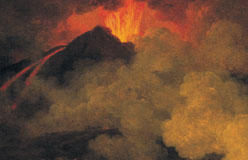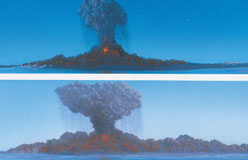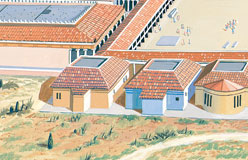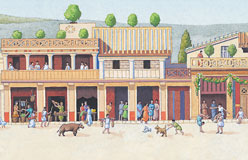August 24, A.D. 79, started out like any other summer day in Pompeii, a town in southern Italy. The sun shone brilliantly. The Bay of Naples was calm. Sheep grazed on the side of nearby Mount Vesuvius (Vuh-soo-vee-uhs). Farmers, fishermen, potters, weavers, and bakers brought their goods to the marketplace to sell.
Just before lunchtime, the town was full of activity. Some people were busy shopping, while others attended a town meeting, and children played games outside.
Suddenly, a deafening crash broke the midday calm, and the ground shook violently. Looking toward Vesuvius, some people noticed smoke rising from its top.
Within hours, Pompeii was buried under six to twenty feet of pumice (a spongy rock) and ash. Two thousand people died, and a whole town was wiped off the face of the Earth. It all happened because of the volcanic eruption of Mount Vesuvius.
Pompeii remained buried for nearly 2,000 years, although the legend of a lost city was passed down from generation to generation. Then, on March 23, 1748, after researchers had made several important discoveries in the area, diggers began to uncover the buried town.
Read on to find out more about Pompeii, the city that time has not forgotten.







